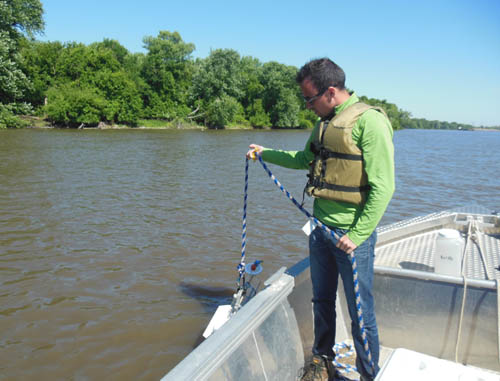Water quality in the seven-county metro area’s three major rivers shows major improvement in the last 40 years in some respects, but in others pollution has become more of an issue over time. Generally, concentrations of sediment, bacteria and phosphorus decreased from 1976 to 2015, but nitrogen and chloride increased.
 The Metropolitan Council recently published “Regional Assessment of River Quality in the Twin Cities Metropolitan Area 1976-2015: Minnesota, Mississippi, St. Croix Rivers” (PDF, 17MB). The report is intended to provide a solid base of technical information to support decisions about water resources in the region.
The Metropolitan Council recently published “Regional Assessment of River Quality in the Twin Cities Metropolitan Area 1976-2015: Minnesota, Mississippi, St. Croix Rivers” (PDF, 17MB). The report is intended to provide a solid base of technical information to support decisions about water resources in the region.
“Our region is a highly desirable place to live, borne out by population growth of more than one million people since 1976,” said Sam Paske, Assistant General Manager for Environmental Quality Assurance in the Council’s Environmental Services division. “The investments and collaborative work by communities, watershed organizations, state agencies, nonprofit organizations and the Metropolitan Council have shown real, positive results for water quality. It demonstrates that working together is the best approach to dealing with challenges we face as a region.”
Monitoring of the rivers dates back to the 1920s. Just a few years after passage of the federal Clean Water Act in 1972, the Council’s river monitoring program was broadened. The electronic record of the data is available starting in 1976.
Common river pollutants include sediment, nutrients, bacteria and chloride (see box). Generally, concentrations of sediment, bacteria and phosphorus (a nutrient) have decreased since 1976, leading to improvements in water quality. But concentrations of nitrogen (another nutrient) and chloride increased, which is an issue for the rivers.
Why has water quality of the rivers improved?
Common water pollutants
Sediment – Silt and other particles suspended in water can reduce light for plant growth, clog fish gills, raise water temperature, and carry nutrients to receiving waters.
Nutrients – Largely phosphorus and nitrate, they can cause severe algae growth and reduce oxygen in the water.
Bacteria – Microscopic organisms, some of which can harm human health.
Chloride – A component of salt that can hurt aquatic life.
Many factors have likely contributed to the improvements since passage of the 1972 Clean Water Act:
-
State water quality standards targeting pollutants such as sediment, phosphorus and bacteria.
-
Investments in wastewater treatment technology, such as advanced secondary treatment and bio-phosphorus removal, to reduce pollutants in treatment plant discharges.
-
Legislation banning the use of phosphorus in laundry detergents, dishwasher detergents and lawn fertilizer.
-
Watershed-wide restoration efforts and implementation of best management practices.
-
Changes in agricultural practices, including conservation tillage and stream buffers.
-
Better management of urban stormwater runoff.
Why have some pollutants increased?
Despite some improvements, portions of the metro area rivers still have degraded water quality. Some likely factors:
-
Increase in hard, impervious surfaces which leads to more runoff into rivers.
-
Increased use of de-icing and water softening salts.
-
Increased number of drain-tile systems on farmland to remove water quickly, which can lead to streambank and gully erosion.
-
Improper use of fertilizer in urban and agricultural settings.
Collective efforts, education and a new standard needed to make further progress
Many groups are working to protect and restore Minnesota’s water resources. Continued collective efforts will be needed to support state, regional and local water resources management and pollution control programs. The report recommends several strategies to support these efforts:
-
Establish a state water quality standard that aims to reduce nitrate being discharged to our water resources to protect aquatic life.
-
Educate citizens and municipalities on efficient chloride use to help combat the rising chloride concentrations across the region.
-
Maintain working relationships between citizens, local water management organizations, and state and federal agencies to plan and carry out projects that improve river water quality.
-
Continue long-term monitoring of metro area rivers to stay informed on changing water quality.
More information